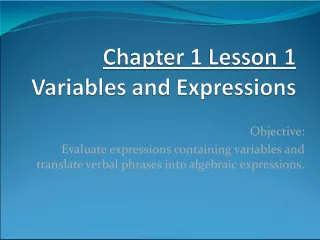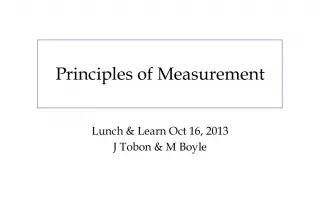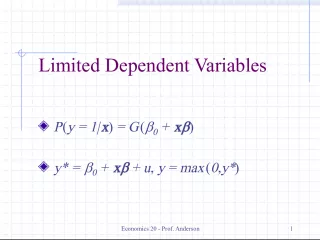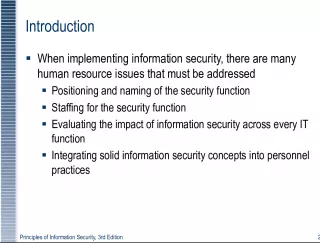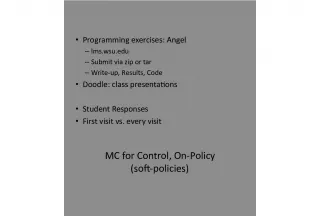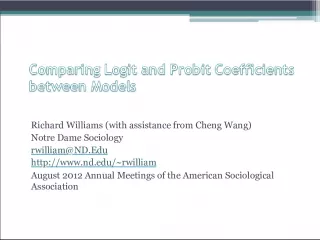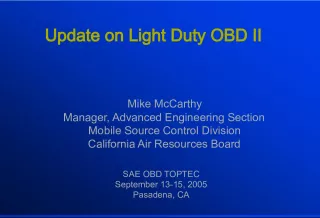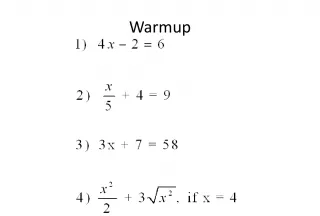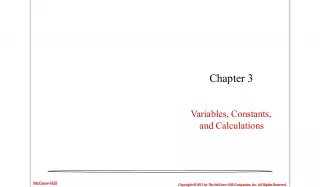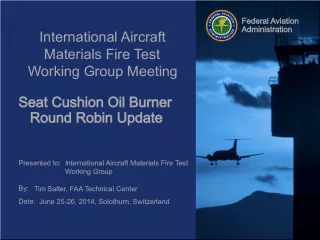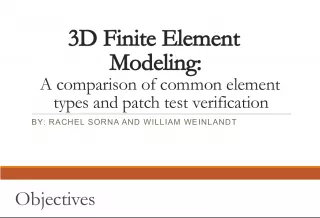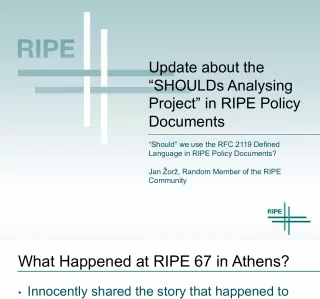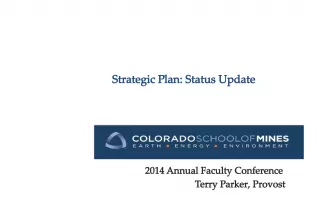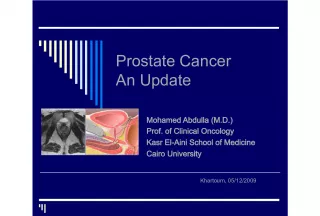E AMDAR QEvC Update: Evaluating Measured Variables and Code Issues
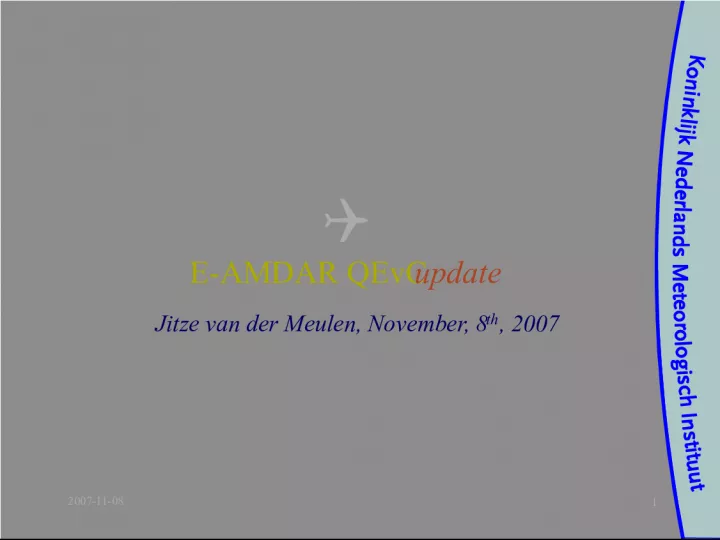

This update covers the evaluation process for measured variables such as position, time of observation, and timeliness, as well as code issues related to TA, FF, and DD reference. The HIRLAM system is used for high precision in time and space, with an automated process for daily checks and evaluation, supplemented by manual review. Position is measured and recorded manually, with X and Y at the airport before and after flight, and Z using QNH control. Code issues are evaluated manually, with FM42 code being used for E AMDAR but not always uniformly across all systems. Evaluation also covers altitude vs. pressure altitude, and T dew vs. mixing ratio.
- Uploaded on | 147 Views
-
 emmaleeward
emmaleeward
About E AMDAR QEvC Update: Evaluating Measured Variables and Code Issues
PowerPoint presentation about 'E AMDAR QEvC Update: Evaluating Measured Variables and Code Issues'. This presentation describes the topic on This update covers the evaluation process for measured variables such as position, time of observation, and timeliness, as well as code issues related to TA, FF, and DD reference. The HIRLAM system is used for high precision in time and space, with an automated process for daily checks and evaluation, supplemented by manual review. Position is measured and recorded manually, with X and Y at the airport before and after flight, and Z using QNH control. Code issues are evaluated manually, with FM42 code being used for E AMDAR but not always uniformly across all systems. Evaluation also covers altitude vs. pressure altitude, and T dew vs. mixing ratio.. The key topics included in this slideshow are E AMDAR, QEvC, measured variables, code issues, HIRLAM,. Download this presentation absolutely free.
Presentation Transcript
1. 2007-11-08 1 E-AMDAR QEvC update Jitze van der Meulen, November, 8 th , 2007
2. 2007-11-08 E-AMDAR QEvC update 2 [1] Measured variables, [2] Position, Time of Observation; Timeliness and [3] Code issues are subjects to evaluation TA, FF, DD Reference: HIRLAM (high precision in time and space) Automized process (daily), checks and evaluation manually Position (X, Y, Z), Time of Observation Largely handwork: - X,Y: at airport (before ASC, after DES) - Z: at airport (QNH control) - time (to be before time of reception) BUFR & FM42 code issues Largely handwork, implementation of BUFR not uniform , FM42 OK for E-AMDAR, not for all others. E-AMDAR QEvC: - Altitude vs. pressure altitude T-dew vs. mixing ratio
3. 2007-11-08 E-AMDAR QEvC update 3 [1] Daily, [2] Monthly and [3] Quarterly reports, all available at QEvC public website: Daily BIAS & GROSS ERRORS of TA, FF, DD & AMOUNT and TIMELINESS of each aircraft Monthly OVERVIEW of TRENDS of BIAS of TA, FF & DD and AMOUNTS based on the daily 's [during month refreshed every 3-7 days for an actual trend] Quarterly EVALUATION with statistics (amount, averages, standard dev.) and gross errors reports + timeliness for a three months period + logistics and operational issues + special studies (analyses) E-AMDAR QEvC: As ASCII encoded Body.txt files: XLS format XLS files with macro, showing graphs Production restarted, new ideas for case studies always welcome
4. 2007-11-08 E-AMDAR QEvC update 4 QEvC focal issues: Evaluation & requirements of AMDAR systems - to be updated? Recognizing the improvements - long term trends (> year) ? Special R&D to investigate weakness/strengths of AMDAR for specific applications - for NWP (Local Area Models) & local use (Aerodrome actual upper air profiles) New variables to evaluate ? QE test and check criteria: to be modified? Modified criteria WMO Quarterly reports to report on periods > 3 months ? Year, 5 years User oriented QEv ? Selected users? Humidity, turbulence, icing ? Different criteria are stated by: - E-AMDAR (QEvC) - WMO AMDAR Manual - WMO GDP[R]S - EUCOS - NOAA (MADIS, NCEP) .
5. 2007-11-08 E-AMDAR QEvC update 5 QEvC: special attention to: Timeliness - definition: t (REC OBS)? - suitable parameter for evaluation (50% availability interval, or 60 min. delay percentage ?) - time of day dependent (case study) ? Profiles from ASC/DEC: - performance as a function of pressure altitude (PA) - observation density, frequency, timeliness Suitability of LHW data for NWP (PA = 10 km only) - frequency (availability), area density, timeliness A suitable, uniform parameter should be defined To test PA, local 10 atm. pressures (QFE) should be made available Specific requirements to be investigated for long haul data We have the folowing numbers: N1 = TOTAL_0_45 (OBS received with a delay beteen 0 and 45 min) N2 = TOTAL_46_60 (OBS received with a delay beteen 46 and 60 min) N3 = TOTAL_61_120 (OBS received with a delay beteen 61 and 120 min) N4 = TOTAL_GT_120 (OBS received with a delay > 120 min) so the total amount is N = N1+N2+N3+N4 To define a parameter Q, with Q1 = N1/N (i.e. based on a delay between 0 and 45 min) Q2 = (N1+N2)/N (i.e. based on a delay between 0 and 60 min) Q3 = (N1+N2+N3)/N (i.e. based on a delay between 0 and 120 min) Q4 = (N1+N2+N3+N4)/N = 100% [only for checking any software] Q should be expressed in % Based on further experience we have to look to either Q1, Q2 or Q3. Since Q3 is in many cases 100%, Q1 or Q2 will be a better choice. Another parameter could be given by P= 1, 2, 3 or 4 based on the 50% values. E.g. if Q1 > 50% then P=1, or if Q1 < 50% and Q2 > 50% then P=2, etc. (will work fine too) .
6. 2007-11-08 E-AMDAR QEvC update 6 QEvC features: Automatic Daily QEv of - temperature TA, wind speed (FF) & -direction (DD) using HIRLAM (3H update) as reference. - timeliness t(TEC)-t(OBS), special check: t(OBS) < t(REC)* Manual QEv, part of special cases (rather complex): - pressure altitude PA, special check: PA[Aerodrome] < PA[aircraft] * - position LAT/LON special check: LAT/LON [first OBS of ASC] or [last OBS of DES] LAT/LON [Aerodrome ] * * Note: TA, FF and FF QEv is affected by incorrect LAT/LON or PA ! Wind vector analyses
7. 2007-11-08 E-AMDAR QEvC update 7 QEvC: new activities Trends in timeliness (and TA, FF, DD), using an special XLS application (using ~ 10 days of the daily XLS-s): performed by the operator using the daily results Local coverage analyses (per aerodrome) (case studies only?) : - amounts by contour plots of ASC/DES data - frequency of availability - timeliness analyses. Control of code formats (ASCII, BUFR) (daily, weekly, monthly?)
8. 2007-11-08 E-AMDAR QEvC update 8 Comments and suggestions are very welcome ! All reports & software are available at: QEVC Website: http://www.knmi.nl/ samenw/geoss/ eumetnet/E-Amdar/QEvC/ Daily reports (update ~ every 4 days) Monthly report (actual: update ~ every 4 days) Quarterly reports Also: Middle East AMDAR: http://www.knmi.nl/samenw/geoss/wmo/Amdar/ARABIA/index.htm
9. 2007-11-08 E-AMDAR QEvC update 9 Case study: Wind analyses by Cartesian co-ordinates Current situation: FF = FF(OBS)FF(MOD) DD = |DD(OBS)DD(MOD) | Vector representation: u = u [OBS] u [MOD] v = v [OBS] v [MOD]
10. 2007-11-08 E-AMDAR QEvC update 10 ?
